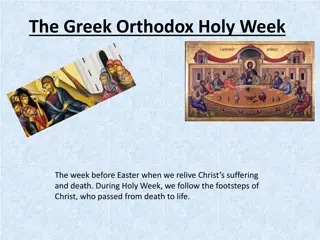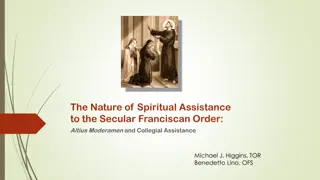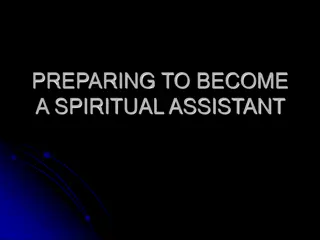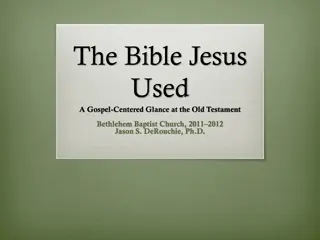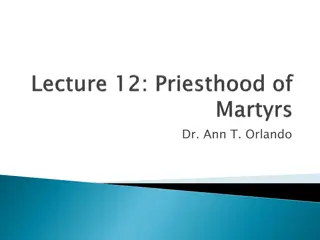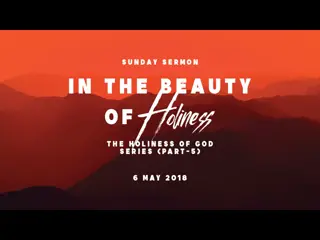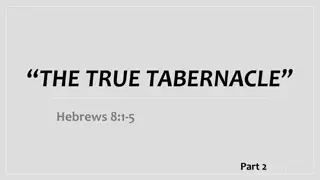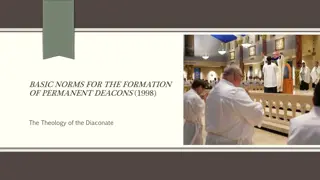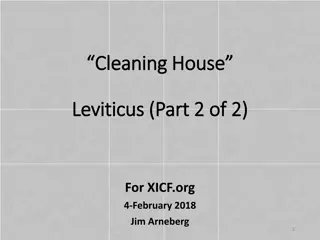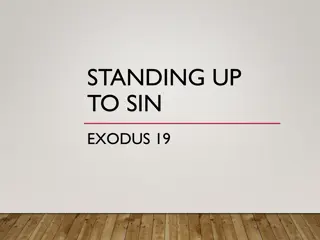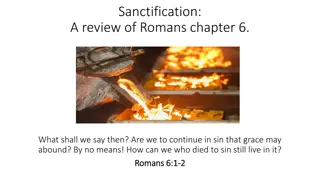The Priestly Society of the Holy Cross: An Association Promoting Holiness Among Secular Priests
The Priestly Society of the Holy Cross, linked with Opus Dei, aims to foster holiness among secular priests through their ministry in service of the Church. Founded in 1943, it provides spiritual formation and support to its members, composed of clergy from Opus Dei and diocesan priests. The society focuses on personal and collective priestly formation, priestly fraternity, and guiding seminarians towards holiness.
Download Presentation

Please find below an Image/Link to download the presentation.
The content on the website is provided AS IS for your information and personal use only. It may not be sold, licensed, or shared on other websites without obtaining consent from the author.If you encounter any issues during the download, it is possible that the publisher has removed the file from their server.
You are allowed to download the files provided on this website for personal or commercial use, subject to the condition that they are used lawfully. All files are the property of their respective owners.
The content on the website is provided AS IS for your information and personal use only. It may not be sold, licensed, or shared on other websites without obtaining consent from the author.
E N D
Presentation Transcript
The Priestly Society of the Holy Cross is an association of clergy intrinsically united to the Prelature of Opus Dei. Its aim is to promote holiness among secular priests through the exercise of their ministry in the service of the Church, according to the spirit and ascetical practice of Opus Dei. It is made up of priests incardinated in the Prelature and of other priests incardinated in their respective particular Churches.
1. Brief History 2. Aims 3. Membership and Structure 4. Continuing Priestly Formation: Personal 5. Continuing Priestly Formation: Collective 6. Priestly Fraternity 7. Dealings with Seminarians
BRIEF HISTORY The Prelature of Opus Dei and the Priestly Society of the Holy Cross: intrinsically and integrally united. October 2, 1928: Opus Dei. The need for priests with the spirit of Opus Dei. 1940: start of ecclesiastical studies of the first three.
BRIEF HISTORY February 14, 1943: God makes St. Josemaria see the Priestly Society of the Holy Cross. October 11, 1943: nihil obstat from the Holy See. December 8, 1943: Canonical establishment by the archbishop of Madrid. June 24, 1944: Ordination of the first three.
BRIEF HISTORY 1948-1949: Possibility of leaving Opus Dei in order to establish an association for secular priests. April 1950: Possible to include in Opus Dei diocesan priests incardinated in various dioceses: through their inclusion in the Priestly Society of the Holy Cross. June 16, 1950: Approval of the Holy See.
AIMS Solely spiritual. Striving to sanctify one s priestly ministry. Striving for holiness in and through the priesthood. Leading others to holiness through one s priestly ministry. Priestly fraternity: we do not struggle alone.
MEMBERSHIPAND STRUCTURE Members: (1) clergy of the Prelature, and (2) diocesan priests, deacons and bishops. Diocesan clergy of the Society are incardinated into their respective dioceses, not into the presbyterate of the Prelature. Nihil sine episcopo. Spiritual help from the Society to fulfill their priestly duties well.
MEMBERSHIPAND STRUCTURE Candidates and Cooperators. Structure. President: Prelate of Opus Dei. In each circumscription (e.g., Philippines and Indonesia): delegated to the Regional Vicar. Coordinator: Spiritual Director of the circumscription. Spiritual nature of the Society. No superiors.
MEMBERSHIPAND STRUCTURE To help the Coordinator: Local Councils for different areas of the circumscription. Principally, in order to facilitate carrying out the aims: personal sanctity, priestly ministry, priestly fraternity. Philippines and Indonesia: 63 clergy of the Prelature + 60 diocesan clergy (in 20 dioceses); around 70 Cooperators.
CONTINUING PRIESTLY FORMATION PERSONAL Mainly through personal spiritual direction: accompaniment and support in the priest s spiritual life. Encouragement to live a plan of personal piety.
CONTINUING PRIESTLY FORMATION PERSONAL Plan of Personal Piety Daily: Morning offering. Mental prayer. Holy Mass. Visit to the Blessed Sacrament. Reading of the New Testament and of some spiritual book. Holy Rosary. Examinations of conscience. Angelus or Regina Coeli. Liturgy of the Hours.
CONTINUING PRIESTLY FORMATION PERSONAL Plan of Personal Piety Weekly: Sacramental confession. A corporal mortification and singing or recitation of an antiphon to the Blessed Virgin Mary on Saturdays. Monthly: A day of recollection.
CONTINUING PRIESTLY FORMATION PERSONAL Plan of Personal Piety Yearly: A retreat. Always: Presence of God. Consideration of divine filiation. Spiritual communions. Acts of thanksgiving. Acts of atonement. Aspirations. Mortification. Study. Work. Order. Cheerfulness.
CONTINUING PRIESTLY FORMATION PERSONAL Special emphasis on the care for the Holy Mass and everything that has to do with it. Center and root of the interior life. Care for the church: beauty and cleanliness. The importance of example. Care for the liturgy.
CONTINUING PRIESTLY FORMATION COLLECTIVE Circles: gatherings to discuss spiritual, doctrinal, moral, pastoral and liturgical topics. Annual seminars: meditations; recollection; spiritual, doctrinal, moral, pastoral and liturgical review classes and workshops; rest and recreation. Retreats for diocesan clergy. Holy hours.
PRIESTLY FRATERNITY This is done mostly on a personal level through regular visits, helping in the pastoral needs of the parish, etc. Camaraderie, enjoying meals together, celebrating birthdays, excursions and other ways of resting.
DEALINGSWITH SEMINARIANS A bias for vocations to the priesthood. Guidance and accompaniment in the spiritual life. Always with the approval of the seminary authorities. Life of piety. Circles for seminarians. Seminar for seminarians.


